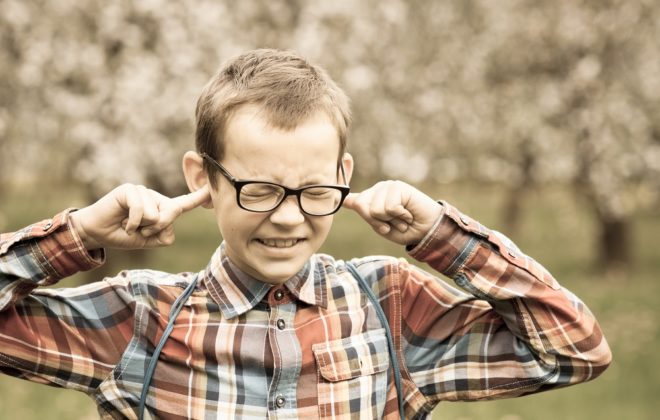The Teenage Tumble: Why Teenagers are Leaving Sport
The Teenage Tumble: Why Teenagers are Leaving Sport
By Wayne Goldsmith
Kids are walking away from traditional, organized, competitive sport.
The evidence is everywhere.
Google the term “sport drop out rates” and start reading.
Or go to your own national government’s sporting administration web site and check out their data – your data.
The number of kids playing traditional, organized competitive sport all over the world is falling.
The sports appearing most vulnerable right now are the traditional Olympic sports, e.g. athletics, diving, gymnastics, swimming etc. and the situation is worst in rural and regional areas.
And the age group where sports participation is falling at the fastest rate is in teenagers aged 15 – 16 years.
The question is why are teenagers leaving sport? Why the Teenage Tumble?
The Teenage Tumble – it’s our fault.
We’ve got to stop blaming the “usual suspects” for the Teenage Tumble.
Teenagers are not leaving traditional, organized, competitive sport because of the Internet.
Or because “kids are so lazy these days”.
Or because “parents are getting softer and let kids get away with anything these days”.
And it’s not Xbox or Play Station or Netflix or HBO or any of the live streaming video services.
It’s not You Tube.
It’s not Snapchat or Twitter or Facebook or Instagram or Tumblr.
The reason teenage kids are saying NO! to organized sport is because of us: coaches, officials, referees, administrators, sporting parents: everyone and anyone who’s been responsible for delivering the experience of sport to children: it is our fault.
Did we do it deliberately? Of course not.
The vast majority of people giving their time selflessly and generously to coach, officiate and administrate in junior sports clubs across the globe are wonderful people who want nothing more than to provide kids with the opportunity to play sport with their friends.
So how did it happen?
Basically because we put the Performance before the Participant!

Performance Focused vs Participant Focused Sport – The Way Forward.
The main reason kids are leaving traditional, organized competitive sport in their thousands is that we all became focused on the Performance of the sport and not the Experience of the Participant.
Coaches – we became obsessed with heart rates and lactates and biomechanics and periodization and aerobic system development and forgot that sport is more about HEART than it is about heart rate.
Want to stop the Teenage Tumble? Build relationships before you try to build oxygen carrying capacities!
Officials – we became centered on rules and policies and procedures and lost sight of the fact that sport is about learning, about experiencing, about enjoyment.
Club administrators – we became overly focused on counting – on metrics – on justifying our existence based solely on how many members we had – rather than on the quality of the experiences we provided for those members.
We invested time and money and effort on RECRUITMENT and on spending every spare cent on marketing campaigns, advertising programs and social media promotions instead of investing in RETENTION – on keeping our current members happy. We forgot that RECRUITMENT flows from RETENTION: by people who love their sports experience sharing their positive stories with others.
Parents – we became lost in the maze of pathways and junior representative teams and elite junior academy programs and forgot that what our kids really want is to enjoy the experience of sport with their friends.
We all forgot that the reason people do anything is because it has meaning for them. We adopted the mistaken belief that our role – as coaches – as officials – as administrators – as parents – was to prepare every child to play the sport – rather than to create engaging and enjoyable sporting experiences for each individual child.
And now, as we all stare at the depressing sports participation statistics, wondering what we can do to turn around the disastrous situation so many in sport are now facing, we’ve come to the realization that we caused it.
So what are we going to do about it?
Real Life Story: Why Teens Tumble out of sport!
A friend of mine has a 16 year old son who loves playing football (soccer). He’s been playing since he was 5 years of age. At 16, he’s got a lot going on…school, a part-time job, a girl-friend, he’s learning to drive…it’s a busy life. But he loves football and he enjoys playing with his friends so he finds time for training twice a week and playing on Friday nights.
Recently, he had to travel to a game which was scheduled to kick off at 8 pm on a Friday evening. His mother had to organize a baby-sitter for her youngest child so she could take her 16 year old son to his football game. It was an hour drive to the venue.
When he arrived, it turned out that only 10 players (i.e. 10 of the 11 players required to form a full team) could make it to the game. The referee advised both teams that the game could not be held owing to “Federation rules” stating clearly that there must be a minimum of 11 players per team.
The coach of the opposing team offered to play with only ten players but said clearly that the result would not count and that the team with the 10 players had to forfeit the game. The referee said he wouldn’t be available to officiate an “informal” game as he wouldn’t be paid to do so. In the end, the coaches decided it was too difficult to proceed and the game was called off.
As a result, several car loads of disappointed, frustrated and angry young players (and their parents) drove home without even kicking a ball and no doubt many will add to the Teenage Tumble.

But here’s the incredibly brilliant news about the Teenage Tumble…WE CAN FIX IT!
Firstly – trying to turn things around when your participants are 15 / 16 years of age is too late! We need to change what we’re doing and how we’re doing it from the first time they kick a ball, grab a bat, swim a stoke, run a lap…..
As an old friend used to say, “As the twig is bent, so shall it grow”.
Want to stop the Teenage Tumble?
Then change the way you work with EVERY kid regardless of their age and stage of development.
Here’s ten ways you – yes YOU and me – coaches, officials, junior sports club administrators, parents, referees, umpires….here’s how you and I can fix this:
- Punt the Pathway. At the risk of being labelled monotonous and predictable, as I’ve been saying for the past five years to anyone who would listen – and to a lot of people who didn’t – the Pathway Killed Sport. We all bought in to a flawed philosophy which convinced us that every kid who picked up a tennis racket could and should play on the A.T.P. circuit and that every child who ever kicked a football should be coached to be Ronaldo. It never made sense – but most of the sporting world bought into it. It has to go.
- Make it about them – NOT about the sport – make everything about the kids. We need to make a fundamental shift in our thinking from delivering Performance Focused Sport to Participant Focused Sport. We have to change our thinking from preparing kids to play the sport to shaping the sports experience to “fit” each and every participant.
- Offer FLEXIBLE training and playing opportunities. (Hopefully) gone are the days where kids are stopped from playing their sport because of petty, inflexible, bureaucratic rules. Who cares if a kid has the wrong color socks? What does it matter if kids turn up a little late because of other commitments? Does it really make a difference if a player wears the wrong type of shorts when they play? Seriously – LET THEM PLAY!
- Umpires, Referees, Judges, Technical Officials ….have to shift their thinking from being focused on rules, policies, guidelines and procedures to Education, Selling Sport, Sport Development and of course SAFETY. Sure – you can disqualify 8 years olds for not executing their techniques like Olympians – but why would you? Sure – you can stop kids from playing because their coach didn’t fill in the right forms on time – but who really cares? LET THEM PLAY!
- Coaches.…move on from rigid “rules” and written in stone coaching practices. When’s the last time you saw a six year old tear a hamstring? OK – then why are you spending 15 minutes warming up six year old footballers? Why are you repeating the same skills practices over and over and over with ten year olds? Do they really need “perfect” technique – which is a total myth anyway? Be flexible. Adapt. Coach the athletes as individuals rather than just training them to perform the sport.
- Club Administrators…Teenagers hate a lot of things but one thing they hate above all is bull%&*#. They can smell it a mile off. When they’re seven years of age, kids will believe anything and tolerate a lot. However, teenagers will quickly lose faith in you and your Club if they even see a hint of unfair treatment, discrimination, bias in selections, disrespect of themselves and their friends, dishonesty or a lack of transparency in decisions. You might get away with questionable decisions and stupidity when you’re dealing with little kids but if you try the same stuff on teenagers they’ll walk out the door faster than you can blink.
- Be acutely aware of the age and stage of the participants when it comes to competitions. Be sensitive to the challenges every participant faces as they get older and their lives become more complex. Don’t offer training and competition experiences for teenagers that are the same as you were offering them when they were five years of age. Don’t give the same ribbons and medals to sixteen year olds that you give to six year olds. Don’t force teenagers to sit through hours and hours of events for younger kids before they get a chance to compete. Use common sense! Your competition schedule needs to reflect the needs of the participants not just the requirements of the sport.
- Lose the “my way or the highway” speech – especially to teenagers. There was a time – 50 years ago – when the “my way or the highway” speech might have worked. For example, “If you can’t be here on time every session then you’re not welcome in my team”. Increasingly, teenagers will just look at you and say, “What’s the fastest way to the highway?”.
- Evolve with the kids. Eight year olds are interested in candy, Lego and Disney movies. Eleven year olds have moved on to Marvel Comics and McDonalds. Sixteen years olds are talking about cars, about dating, about study, about their college choices, about their identities, about their clothes, about their hair AND about their sport. No matter what role you play in sport – coaching, officiating, administrating or parenting – adapt your role and the experience you provide as the participants’ needs change.
- Social programs before Sports programs. Every day I get emails or calls about my views on Junior Sport representative teams or Elite Junior Sports Academies. I tell everyone the same thing. Don’t talk to me about your sports program: tell me about your social program. Teenagers, from the moment they wake up in the morning, are peer-centric and peer-connected. The thoughts, beliefs, attitudes, choices and feelings of their friends and peer group are vitally important to them. When it comes to their sports experience, their relationships in and around their team are critical. If you want to address the declines in teenage participation in your sport and stop the Teenage Tumble, change your focus from rep-teams, academy programs and high performance systems to social programs, friendships and better relationships.
There’s Five critical questions all of us need to ask ourselves – and each other – every day – in everything we do in sport:
- Is this safe?
- Is it fun?
- Are the kids learning something?
- Are their friends here?
- Will they come back next time?
If you can answer a resounding and confident YES to all of these questions, chances are, you’ll have more teenagers playing sport than you can handle!
Summary:
- Traditional, competitive sport is not dead yet: but it is dying. But there’s still time to resuscitate it! and bring it back to life.
- The fundamental reason why we’ve seen such a significant decline in the number of kids playing competitive sport can be summarized in one word: Experience. The experience of sport we – coaches, officials, administrators and parents – have been providing for kids hasn’t worked – it’s failed our participants and it’s led to the current situation where sporting organizations from local junior sports clubs to national and even international sporting federations are desperate to try and save their sport from extinction.
- HOWEVER – the most wonderful news is that we – coaches, officials, administrators and parents can turn this around. We have it within our power – within our influence – to reverse this situation. We can – by learning how to create positive, meaningful, relevant, engaging and enjoyable sporting experiences for participants – we can make our sports all they should be and can be.
Wayne Goldsmith

Tags In
Related Posts
7 Comments
Leave a Reply Cancel reply
Categories
- Athlete Development (3)
- Coach Development (1)
- New Sport (10)
- Sports Parenting (1)
- Sports Participation (1)
- Sports Science (1)
- Sports Systems (4)







Like turning up to a rugby trail game to be told by the other parents your kid is only here to make up the numbers or opposing team as the main team was already picked. My son dropped out following this type of performance run system. I also had to agree with him.
I have 3 children – all boys. All enjoyed sailing, but not necessarily competitively. All complained about the state (age)of our vehicles. When presented with the choice of continuing in the sport or upgrading the vehicle they chose the sport. Our criteria for continuing with the sport always included enjoyment: if they did not enjoy taking part then we would drop the sport.
All sports have highs and lows: participants likewise. It is down to the parents and coaches to ensure that fun is part of the participation. Results are ephemeral – they seem important at the time, but the enjoyment (and friendship made) is remembered for longer than the results – unless you are at olympic level (different ballgame).
If there is not enough enjoyment in the sport it will die. The enjoyment might purely be in the social events (not, in my opinion, sustainable) but there has to be enjoyment for the sport to survive.
‘Get em into sport, keep em out of court ‘
Simple. As the article reads, they want mates, good times, day filled with activities and learning. Sport has all of this.
And stops the
‘Idle hands make trouble ‘
Again as coaches / parents/ caregivers, we need to remember to develop a passion for and a love of the sport they choose, so they wanna learn , love and stay with so they become the next set of coaches / officials/ committee member etc…
As a athletic coach for over 35 years I have found young people are been conditioned to want success now. It is very had to persuade them that wining is not everything and progression through fun and enjoyment leads to longevity in sport.
Agreed! I have many anxious kids who will not play because they are not already experts at it. Their self-view of their actual abilities and the process to get there is vastly different! No you can’t throw a basketball from the three point line and get it in on the first time. Anxiety, lack of play as a child, and perfectionism all plays a part.
[…] years or so, sporting systems around the world were “married” to the Pathway model and the misguided belief that every kid who picked up a tennis racket needed to be placed on the “… and every kid who kicked a ball was on the “Pathway” to the English Premier […]
[…] know sport is struggling to turn around the disastrous drop-out rates being witnessed all over the […]